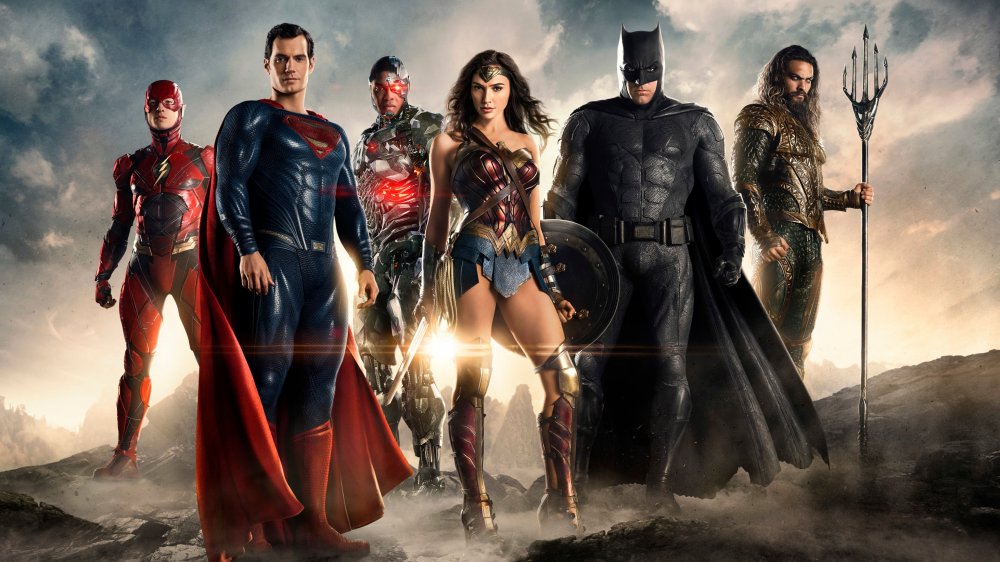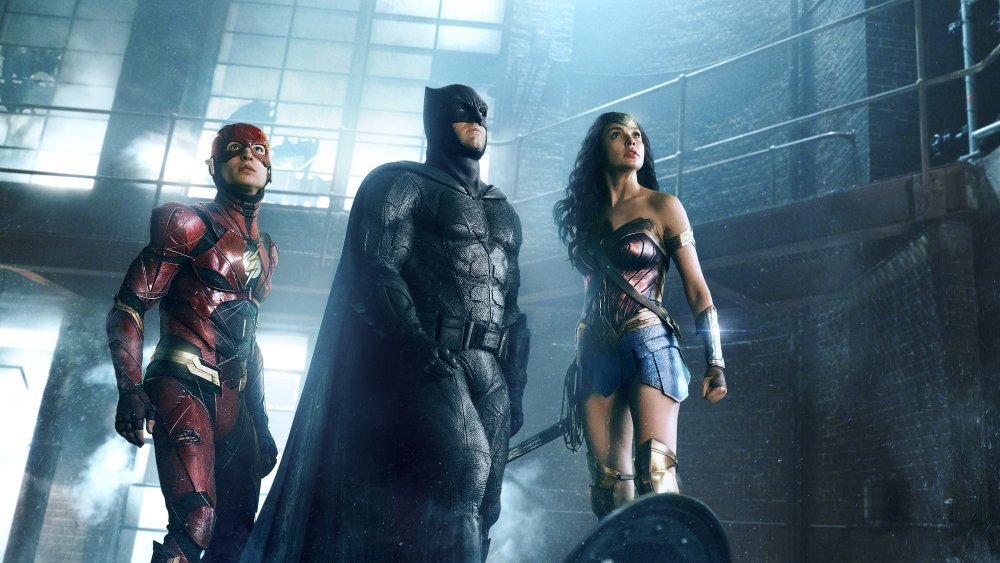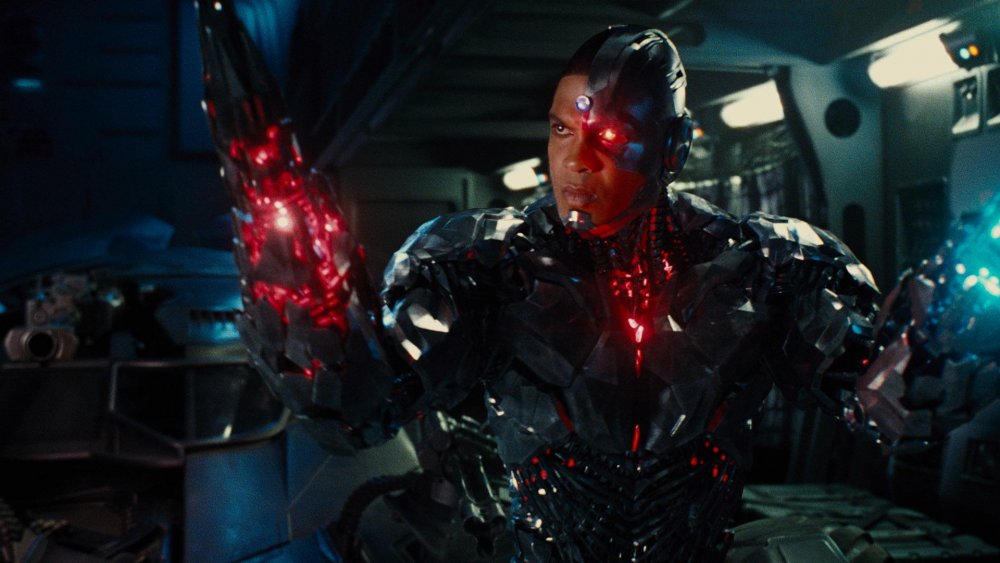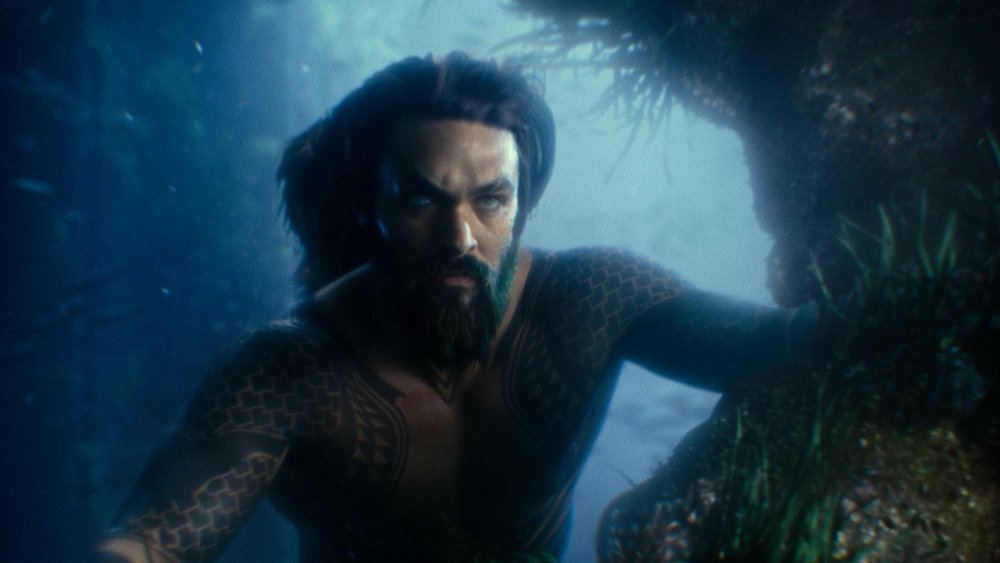Why Warner Bros. Decided To Release The Snyder Cut Of Justice League
After two and a half years of fans campaigning, Warner Bros. announced the seemingly impossible: The long-speculated "Snyder Cut" of DC's Justice League is happening.
Following the highly anticipated 2018 feature's underwhelming performance at the box office, Snyder fans were desperate to know if an edit of the film the way the original director intended it existed. As the film's promotion ramped up, however, it became clearer Warner Bros. had no interest in releasing a Snyder-stamped version. The Wall Street Journal reported that people who worked on the film confirmed Snyder had assembled a very rough cut following the completion of principal photography, but that, at the time, even he had no intention of releasing it. One anonymous source was quoted asking, "Who are these people who won't stop talking about the magical Snyder Cut that doesn't exist?"
A spokesperson told WSJ at the time that Snyder "wouldn't discuss a director's cut," but, eventually, Snyder did discuss it — almost any time a fan asked him. In a video posted to Twitter of Snyder at a March 2019 fundraiser screening event, the director can be heard telling a fan, "All I can say is. .. sure there's a cut ... it's done. I have a cut. I have a bunch of them." Shortly after, another fan seemingly corroborated this, claiming Snyder had confirmed that it not only exists, but is "ready" and just needs "a few CG tweaks" (via ScreenRant). Cut to a year and one Man of Steel viewing party later, and Snyder is declaring his long-demanded version is coming.
If Warner Bros. was willing to release it, however, why hadn't the studio done it sooner? What changed between the film's theatrical release and Snyder's surprise announcement? It appears that a persistent fan campaign, a Warner Bros. leadership change, and a new content platform may have created the perfect Snyder Cut storm.
Fans of the fabled Snyder Cut used the oldest trick in the book: an unrelenting campaign
It's reasonable to assume that the passage of time would dampen the calls to #ReleaseTheSnyderCut, but even as Warner Bros. executives continued to brush off the idea that the studio was withholding some version of Snyder's vision for Justice League, the fan campaign to see it released only got louder. An initial effort to get the mysterious "cut" released through email and Twitter trend campaigns ramped up into more grandiose efforts as supporters became even more persistent about getting some version of the movie they believed would redeem the DC team-up,.
A petition featuring more than 170,000 signatures requesting Snyder's version circulated the Internet. Not only were Snyder fans hounding the studio with digital communications, but they were moving into the physical realm, paying for expensive Times Square billboards and bus stop ads at San Diego Comic-Con. Eventually, even some of the film's stars, including Jason Momoa, got on board.
According to The Hollywood Reporter, this was the evidence Warner Bros. needed to re-invest in a movie that took a box office loss upwards of a $100 million, per Forbes estimations, following Joss Whedon-led reshoots that ballooned the movie's budget to $300 million. Back in November 2019, current chairman of Warner Bros. Pictures Toby Emmerich called Zack Snyder and openly conceded that the movement and demand wasn't a fluke. "This is real," Snyder recalls ed Emmerich saying. "People out there want it. Would you guys ever consider doing something?"
While two years' worth of calls by the Snyder fandom to get his cut a home entertainment or theatrical release played a legitimate role in making it a reality, the fan campaign is likely not the only reason it's happening.
A change in Warner Bros. leadership may have given Snyder a second chance
After all, as many fan campaigns as have found success over the years, there have been twice as many that haven't. What's more, if fan campaigning, alone, had made the Snyder Cut a reality, Warner Bros. may have agreed to "release" it exactly as per fans' demands. But THR's story subtly corroborates the WSJ piece, proving that, among the many other reasons for not releasing Snyder's version, putting it out would require more than a few tweaks. What fans will get isn't just a director's cut, but a film or mini-series that's at least four hours long and will feature approximately $20 to $30 million in edits.
So, what else may have helped change Warner Bros.'s mind? One noticeable difference between 2018 and now is studio leadership. A different Wall Street Journal report claims former chairman and CEO of Warner Bros. Kevin Tsujihara "made it clear" that Snyder's Justice League should be under two hours, a drastic reduction of what fans are now getting. The report also acknowledges that studio executives wanted a story that was less "dark and violent" and more optimistic in tone. In so many words, they wanted more Marvel, and less Snyder. This led to a last-minute rewrite of the Justice League script involving Snyder's team, screenwriter Chris Terriofan, popular comic-book writer Geoff Johns, and Jon Berg, a production executive.
Tsujihara resigned in March 2019 amid a major scandal, and was eventually replaced. This change-over inspired fans to renew their calls for a Snyder Cut, only this time, they directed it at Warner Bros. new, and possibly more receptive, leadership. It was an executive team that would also oversee the reboot of Suicide Squad, another DC team-up movie that severely underperformed but had somehow earned a second chance. If it could happen once, why not again?
The Snyder Cut of Justice League doubles as original, exclusive HBO Max content
Arguably the most telling news to come out the Snyder Cut announcement, though, is where fans will be able to watch it. The #ReleaseTheSnyderCut campaign had mostly focused on getting Snyder's Justice League story released in the home media market. If they were really lucky, they'd get a theatrical release, but most fans had more realistic and reasonable expectations. Yet, home video is not where you'll be able to watch the film. If you want to see the Zack Snyder version of the first chapter in his planned five-film arc, you will have to buy a subscription to the studio's new streaming service, HBO Max.
By releasing the project on its own streaming service, Warner Bros. is saving tons in marketing and distribution money it would have had to shell out for a theatrical or home media release. In some ways, the cut is now just another original exclusive in HBO Max's growing library, which will feature 10,000 hours of content when it launches at the end of May 2020. While $20 to $30 million for additional post-production is not pocket change, it pales in comparison to what Warner Bros. paid to acquire Friends; not counting what the streamer spent on the reunion special, that five-year deal cost HBO Max $85 million annually, per THR, putting the total spent on the nearly two-decades-old comedy at $425 million.
For what Warner Bros. paid to have Snyder release a film that some people will see regardless of how poorly its original theatrical cut was received, setting loose the Snyder Cut seems like a no-brainer.



